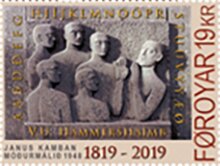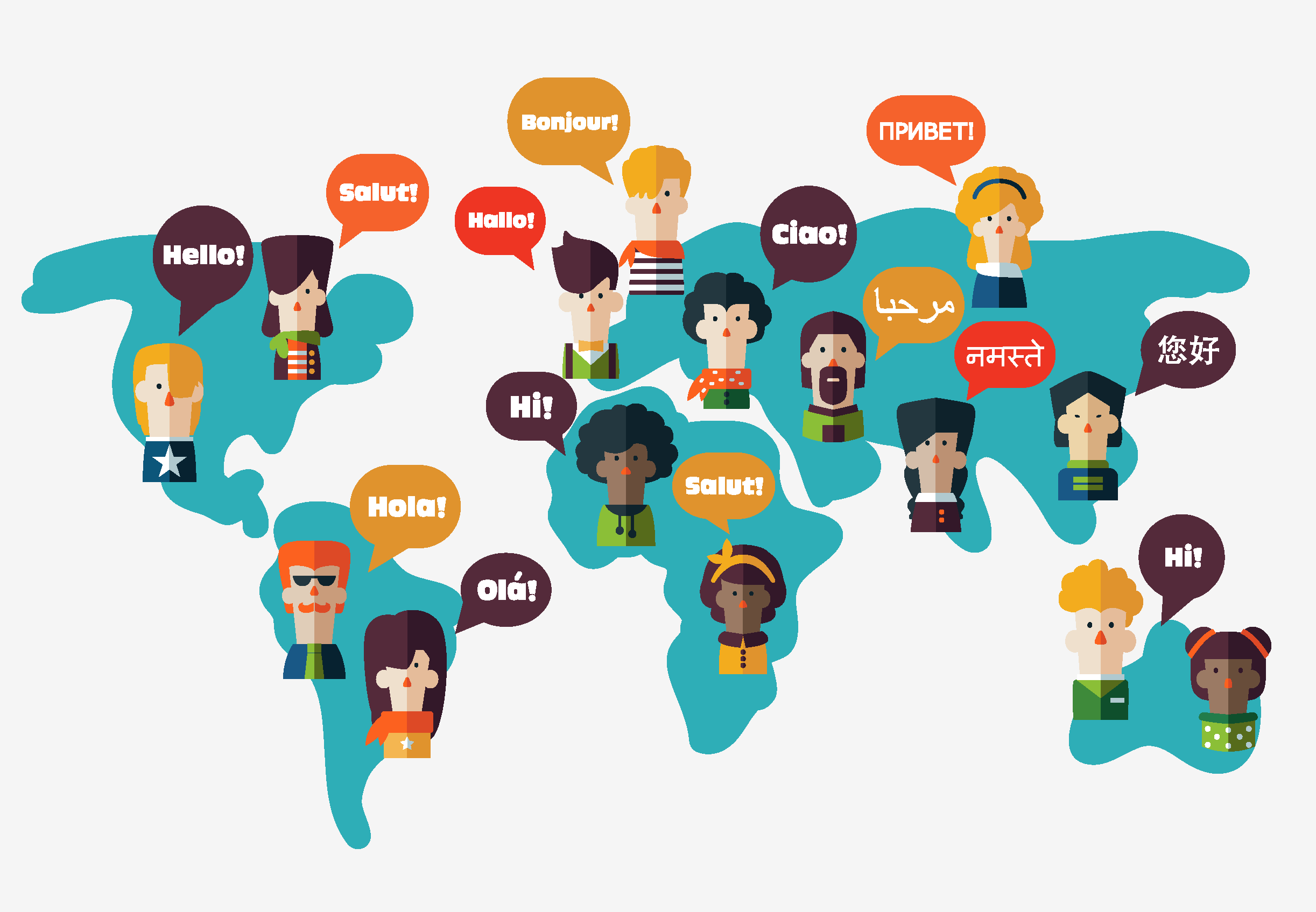Stamp: "The Mother Language" by Janus Kamban (Faroe Islands 2019)
"The Mother Language" by Janus Kamban (Faroe Islands 2019)
29 April (Faroe Islands ) within release Bicentenary of Venceslaus Ulricus Hammershaimb (2019) goes into circulation Stamp "The Mother Language" by Janus Kamban face value 19 Faroese króna
| Stamp "The Mother Language" by Janus Kamban in catalogues | |
|---|---|
| Colnect codes: | Col: FO 2019-08c |
Stamp is horizontal format.
stamp from souvenir sheetAlso in the issue Bicentenary of Venceslaus Ulricus Hammershaimb (2019):
- Stamp - Portrait of Venceslaus Ulricus Hammershaimb face value 17;
- Stamp - Book published by Venceslaus Ulricus Hammershaimb face value 11;
- Stamp - "The Mother Language" by Janus Kamban face value 19;
- Souvenir Sheet - Venceslaus Ulricus Hammershaimb, Linguist, Bicentenary face value 47;
|
Data entry completed
83%
|
|
|---|---|
| Stamp "The Mother Language" by Janus Kamban in digits | |
| Country: | Faroe Islands |
| Date: | 2019-04-29 |
| Size: | 40 x 30 |
| Emission: | Commemorative |
| Format: | Stamp |
| Face Value: | 19 Faroese króna |
Stamp "The Mother Language" by Janus Kamban it reflects the thematic directions:
Art is a diverse range of human activities in creating visual, auditory or performing artifacts (artworks), expressing the author's imaginative or technical skill, intended to be appreciated for their beauty or emotional power. In their most general form these activities include the production of works of art, the criticism of art, the study of the history of art, and the aesthetic dissemination of art. The oldest documented forms of art are visual arts, which include creation of images or objects in fields including painting, sculpture, printmaking, photography, and other visual media. Architecture is often included as one of the visual arts; however, like the decorative arts, or advertising, it involves the creation of objects where the practical considerations of use are essential—in a way that they usually are not in a painting, for example. Music, theatre, film, dance, and other performing arts, as well as literature and other media such as interactive media, are included in a broader definition of art or the arts. Until the 17th century, art referred to any skill or mastery and was not differentiated from crafts or sciences. In modern usage after the 17th century, where aesthetic considerations are paramount, the fine arts are separated and distinguished from acquired skills in general, such as the decorative or applied arts.
A book is a medium for recording information in the form of writing or images. Books are typically composed of many pages, bound together and protected by a cover. Modern bound books were preceded by many other written mediums, such as the codex and the scroll. The book publishing process is the series of steps involved in their creation and dissemination.
Language is a structured system of communication that consists of grammar and vocabulary. It is the primary means by which humans convey meaning, both in spoken and written forms, and may also be conveyed through sign languages. Human language is characterized by its cultural and historical diversity, with significant variations observed between cultures and across time. Human languages possess the properties of productivity and displacement, which enable the creation of an infinite number of sentences, and the ability to refer to objects, events, and ideas that are not immediately present in the discourse. The use of human language relies on social convention and is acquired through learning.
Linguistics is the scientific study of language.The areas of linguistic analysis are syntax (rules governing the structure of sentences), semantics (meaning), morphology (structure of words), phonetics (speech sounds and equivalent gestures in sign languages), phonology (the abstract sound system of a particular language, and analogous systems of sign languages), and pragmatics (how the context of use contributes to meaning). Subdisciplines such as biolinguistics (the study of the biological variables and evolution of language) and psycholinguistics (the study of psychological factors in human language) bridge many of these divisions




